Overview
- Main Attractions: City Palace, Hawa Mahal, Jantar Mantar, Amber Palace, Nahargarh Fort, Monkey Temple
- Best Time to Visit: October to February
- Local Specialty: Gems
- Travelled By: Train, auto rickshaw, bus
- Cost: $$
- Duration of Stay: 4 days
- Location: Rajasthan, India
Author Reviews[display_rating_item_results rating_form_id=”4″ rating_entry_ids=”1″ show_category_filter=”false” show_options=”true” result_type=”star_rating” preserve_max_rating=”true” show_title=”false” show_count=”false” ]
Total Rating: [display_rating_result rating_form_id=”4″ show_count=”false” show_rich_snippets=true] [accordions load=”1″] [accordion title=”User Reviews” last] [display_rating_item_results rating_form_id=”5″ show_options=”true” result_type=”star_rating” preserve_max_rating=”true” show_title=”false” show_count=”true” show_rich_snippets=true] [/accordion] [accordion title=”Add Review”][display_rating_form show_email_input=”true” show_comment_textarea=”true” show_name_input=”true” rating_form_id=”5″] [/accordion] [/accordions]
Summary
Jaipur is the capital of the North Indian state of Rajasthan. It is better known as the Pink City, for the profusion of buildings built in pink stucco, and for the many forts, palaces and heritage structures. We spent four days in Jaipur, and there was still not enough time to see the many monuments and attractions this city has to offer. The Pink City has strong tradition and heritage, which can be seen, not only at the forts and palaces, but also at its colourful and lively markets in the old city. Rajastan Tourism is actively promoting the wonders of Jaipur to the international community.
Jaipur: Our Experience
November 2nd, 2013 (Day 1)
We arrived into Jaipur, the capital of Rajasthan, around 2:30pm on a train bound from New Delhi. It took us five hours to get to Jaipur, and luckily the train was on time.
Being a native of India, I had travelled on an Indian train before, however this was Graham’s first train trip in India. Being a new experience for Graham, I had booked us seats in an AC 3-tier compartment. Normally, we would have travelled in a sleeper compartment given it was a daytime trip, but I wanted Graham’s first experience on an Indian train to be a good one.
The AC compartments are very comfortable, as the carriage is AC, of course, the seats are well cushioned, and the carriage is cleaner, as mostly upper class Indians travel in the AC compartments. They also provide pillows, sheets and blankets, which makes sleeping more comfortable.
[singlepic id=4466 w=720 h=560 float=center]
Before we boarded our train in New Delhi, we bought some snacks and drinks at the train station, so we could have our lunch on the train.
Being Graham’s first time in India, he spent most of his time looking out the window at the scenery as the train went past villages and city slums. Having arrived from Australia the day before, I was still getting over my jet lag, so I caught a nap on one of the top bunks. Those five hours went pretty quickly in a comfortable train.
When we climbed off the train at the Jaipur railway station, we were squashed like sardines, as hundreds of passengers attempted to climb the narrow overpass to get to the exit. It took us twenty minutes to get out of the railway station.
[singlepic id=4447 w=720 h=560 float=center]
One hurdle out the way, we had to prepare ourselves for the next one – an assault by several auto rickshaw drivers waiting outside the train station. Seeing a white face, they pounced on Graham, attempting to get him into one of their rickshaws.
At first, we politely told them that we already had a ride, but they wouldn’t take no for an answer, so we started walking faster to get away from them. Dad had already arranged a local auto rickshaw guy to pick us up at the train station. Finding him was like looking for a needle in a haystack, as there were so many people and auto rickshaws milling around. After a few phone calls, we located him, dropped ourselves and our bags in the rickshaw and made our way out of the crazy railway station.
Our hotel, Pearl Palace, is located in the new section of Jaipur, 2.5 kilometres from the railway station. After checking in and leaving our bags in our room, we jumped back into the rickshaw and asked him to take us to City Palace in the old city.
[singlepic id=4471 w=720 h=560 float=center]
City Palace Jaipur is the major highlight in the old city of Jaipur. Built by Sawai Jai Singh II, the founder of Jaipur, it was the former seat of the Rajput Maharajas in Jaipur, and it is still the current home to the former royal family.
It is a massive complex of palaces, courtyards, pavilions and museums. It is also home to the famous Jantar Mantar, Hawa Mahal and Iswari Minar Swarga Sal minaret. The most noteworthy features within the City Palace itself is the Mubarak Mahal and Chandra Mahal.
Since it closes at 5pm, we only had about two hours to see the palace itself. Jantar Mantar, Hawa Mahal and Iswari Minar Swarga Sal minaret would have to wait till another day.
[singlepic id=4472 w=720 h=560 float=center]
Following our tour of the City Palace, we took the auto rickshaw back to our hotel to relax and rewind before dinner. Still jet lagged, we decided to try the restaurant at the hotel, Peacock Rooftop Restaurant. Having read brilliant reviews about this restaurant, our anticipation for a great dinner was high.
Peacock Restaurant Jaipur is a multi-cuisine restaurant, serving Indian, Chinese and Continental, located on the rooftop of our hotel. While it serves up multi cuisines, it specialises in North Indian dishes. Being the season of Diwali, we were sure to enjoy great views too while having dinner.
Having had a hectic two days travelling, we were off to bed early, ready for an early start the next day. There is so much to do and see in Jaipur and we were excited to be here!
November 3rd, 2013 (Day 2)
[singlepic id=4444 w=720 h=560 float=center]
We timed our holiday in Jaipur so we could spend Diwali here. As a result, our second day in Jaipur fell on the main day of Diwali. This is the best time of the year to visit Jaipur, as the city is the most colourful, and people dress in beautiful Indian garments and celebrate in the streets with fireworks. In the morning, we decided to head out early in order to catch as much action as possible.
We took an auto rickshaw to the old city of Jaipur, entering into the walled city through the Ajmeri Gate. Jaipur is better known as the Pink City, for the profusion of buildings built in pink stucco, and for the many forts, palaces and heritage structures. The facades in the town are all painted with the same pigment, a locally produced burnt sienna, called gehru. Mixed with white, it gives an elegant softness to the whole city in an endless array of pinkish ochres.
Initially, we had planned to complete a walking tour of the Pink City, however, most of the shops were closed at 9am, so we changed our plans and headed to the Nahargarh Fort instead.
[singlepic id=4451 w=720 h=560 float=center]
Instead of taking an auto rickshaw to Nahargarh Fort, we decided to climb to the Fort along a zigzagging two kilometre-long pathway, called Nahargarh Road, which starts northwest of the Old City. It’s a long, steep, narrow and windy road, but the views along the pathway were really interesting.
The path leading up to the Fort was an eye opener, as we got to see the contrast between the urban grandeur and the village life of Jaipur. The backs of the houses, around inner courtyards, have an unexpected medieval feeling. Here, we walked past the back of houses, where buffaloes stood, and cow dung shaped in to flat patties were set out to dry. Pigs played in the garbage, while goats ran around looking for leaves to eat.
[singlepic id=4473 w=720 h=560 float=center]
Nahargarh Fort is comparatively a small fort, but it is well known for the panoramic views of the artificial lake, Man Sagar, as well as the city of Jaipur. Inside the fort walls is a small palace, called the Madhavendra Bhavan palace. Together with other forts it was the defence wall of the city of Jaipur.
Religion is a strong part of the Indian culture and therefore, it influences a big part of their daily life and activities. Most animals are worshipped by them, and as such, animals and people co-exist harmoniously side-by-side. Leftover food from the day before is fed to the street animals, who are plentiful, and people get out of the way when the animals stand in the middle of the street, so as not to injure them. This couldn’t be more evident everywhere we went in Jaipur and Rajasthan. This humane treatment of animals in India shocked and amazed us at the same time.
The Pink City was planned by an enlightened ruler in the 18th century, Jai Singh II, who was inspired, both, by European maps found in an atlas he loved, and by intensive contact with Western Europe. Jaipur is considered to be among the first planned cities in India, with the King following Vastushastra in laying the city, containing a network of wide streets and boulevards set out in a grid like fashion.
Meant to become a shelter for artisans working for a wealthy court, the large town, surrounded by high walls, follows a regular grid with areas still occupied by the professions as when they were invited to establish themselves here three centuries ago. The streets are wide and were named after the nobles who had been given houses by their king. Since then, Jaipur has progressed in leaps and bounds without losing its tradition and heritage.
[singlepic id=4470 w=720 h=560 float=center]
When we got back to the old city by midday, it had opened for business – shops had their shutters lifted, and the streets were bustling with people doing their last minute shopping for Diwali. In fact, hawkers had opened temporary shops on the streets selling all sorts of wares for the festival.
There was no better time to have done a walking tour of the Pink City than that afternoon. The streets were crowded as everyone was out either shopping for Diwali or celebrating Diwali with their family and friends. Shops were decorated and geared up for the Diwali sales.
[singlepic id=4469 w=720 h=560 float=center]
As in any country, food is a big part of the Indian celebrations, and there was plenty of different kinds of food available on the streets. Sweet shops were in the dozens and had extended their store front onto the road to accommodate the extra sweets they had produced for Diwali. ‘Namkeen‘ or salty snacks were piled up high, in all different colours and combinations.
Our Jaipur walking tour was an assault on the senses – the smell of spices in the air, the sound of car horns on the street (and right behind us!), the colours of women’s saris, the taste of savoury snacks, and the sweat on our brow, as we walked along the back streets and the main roads of the Pink City, was incredible to say the least.
Having lived in India before, I could eat street food with no issues, however, Graham had to abstain, at least for now, till his immune system adjusted to the unhygienic nature of the street food here.
[singlepic id=4470 w=720 h=560 float=center]
While we were on our walking tour of the Pink City, we went past the Hawa Mahal and the Iswari Minar Swarga Sal minaret. While we decided to visit the Hawa Mahal and Jantar Manter the following day, we did climb up the minaret for some wonderful views of the Pink City.
At the base of the minaret, we saw a Western tourist sitting on the steps looking washed out. She told us that she was too tired to climb and was waiting for her friend to return. In all honesty, the climb up to the top is not that hard, however, it is understandable that walking around the Pink City can make one tired. Nevertheless, it is worth the climb just for the views of the old city.
[singlepic id=4450 w=720 h=560 float=center]
An hour later, on the corner of Hawa Mahal Road and Tripoli Bazaar Road, an aroma of delicious food being cooked wafted towards us. I noticed a crowd of people surrounding a snack shop on the pavement, and we went to inspect. People were eating chana batura like it was going out of fashion.
‘Chana batura’ is an Indian snack made up of ‘chana’ and ‘batura’. Chana is basically chick peas cooked in spices, tomatoes, onions and coriander, and sprinkled with a dash of lime or tamarind. This come with batura, a type of Indian bread that is soft, doughy and lightly fried.
This dish was the best street food I ate in Jaipur by far. It was immersed with flavour that I wanted to lick the paper bowl clean. The sadness in Graham’s eyes was heartbreaking, as he watched me devour the snack with delight.
[singlepic id=4457 w=720 h=560 float=center]
While we were walking around the old streets of Jaipur, we found a lunch spot for Graham – at LMB Jaipur. This spot became a regular lunch spot for Graham during our four days in Jaipur.
Given that I had a samosa for lunch, Graham decided to try one of LMB’s samosas – a hare bhare samosa. This is not the regular aloo samosa that is a standard in India, rather, it has a different filling, which is more savoury.
The shop was packed with customers either have a bite to eat or buying sweets for Diwali. On a normal day, LMB is a very popular eatery in Jaipur, and on Diwali day, it was bursting at the seams.
By late afternoon, we were starting to have tired legs, so we caught a rickshaw back to the hotel to relax for a while before our evening trip.
[singlepic id=4475 w=720 h=560 float=center]
We had arranged to go on a Night Tour of the Pink City with RTDC, a government-run organisation, which organises both day and night sightseeing tours of Jaipur.
We were excited about tonight, being Diwali, the fireworks were going to be out and people would be celebrating in the streets. The tour was scheduled to run from 6:30pm to 10:30pm, and it included dinner at the Nahargarh Fort, which was going to provide some spectacular views of the Jaipur skyline.
Read our review of the places to visit in Jaipur at night.
Following our night tour, we arrived back at our hotel after midnight. We were swamped and ready for bed. As we ran through in our minds all the things we had seen and done that day, we realised what an incredible city Jaipur is!
November 4th, 2013 (Day 3)
[singlepic id=4476 w=720 h=560 float=center]
Another early morning start as we made our way to Galtaji or the Monkey Temple Jaipur in Galwar Bagh, about 30 minutes in an auto rickshaw from our hotel. I was really excited as I’d heard so much about the Monkey Temple and even seen the monkeys at this temple on an episode of the documentary, Wildest India.
The auto rickshaw driver dropped us at the head of the road to the Monkey Temple, so we had to walk up a long, steep, narrow pathway. I’m glad he dropped us there, as we got the opportunity to interact with the monkeys below and watch the pilgrims make their way to the Monkey Temple.
This place is fascinating, especially during the festivals of Diwali and Makar Sankranti, as pilgrims from all over Jaipur make their way here to take a dip in the holy waters situated in the temple. We were lucky to witness their pilgrimage during the festival of Diwali.
[singlepic id=4477 w=720 h=560 float=center]
Following the Monkey Temple, we asked the rickshaw driver to drop us off at the Hawa Mahal or Palace of Winds, situated at the corner of Tripolia Bazaar and Hawa Mahal Road in the Pink City. It is a part of the City Palace complex, along with Jantar Mantar and Iswari Minar Swarga Sal minaret.
Known as the icon of Jaipur and the most photographed attraction in the city, it is a fascinating and unique palace like no other. A five-storey building made of red sandstone, it has a staggering 950 windows, and was built to allow the women of the royal household to watch the daily life and processions on the streets below without being seen themselves. However, the palace gets its name from the fact that it has been designed in such a way that air circulates and keeps it cool even in the hot summer months.
[singlepic id=4478 w=720 h=560 float=center]
Next door to the Hawa Mahal is the Jantar Mantar, however the entrance to this attraction is via the City Palace entrance called Indra Pol.
Among the monuments in Jaipur, nothing is more fascinating than Jantar Mantar. While the name is enough to conjure up images of magic, its function is rather more scientific. Nevertheless, it is noteworthy, because it was much ahead of its time.
Jantar Mantar is an astronomical observatory, consisting of 14 instruments for measuring various events, such as ascertaining time, predicting eclipses, tracking stars, determining the position of the planets, establishing celestial altitudes and other similar events.
[singlepic id=4459 w=720 h=560 float=center]
When we finished with Jantar Mantar, we went to find the best lassi in town. As we walked along Johari Bazaar Road in the Pink City, we came upon a shop called Lassiwala that had a big crowd outside the shop. They do sell the best Jaipur lassi, and I got to try it out on our last two days in Jaipur.
[singlepic id=4462 w=720 h=560 float=center]
Although this wasn’t a shop on the road, Graham didn’t want to take any chances, so we went to LMB for Graham to try their lassi. While the crowds were less than the day before, it was still crowded with people having lunch. Although not as nice as Lassiwala, their lassis are pretty good and extremely sanitised.
After lunch, we tried to enter Central Museum, located on MI Road, just outside the city gates. However, the museum was under restoration and was closed to the public.
Having got a good sense of Jaipur by our third day, we decided to walk back to our hotel. On the way, we passed by Niros Restaurant on MI Road and made a booking for dinner. There were still quite a few people having lunch in the restaurant.
[singlepic id=4479 w=720 h=560 float=center]
Around 7pm, after a rest in the hotel, we walked to Niros Restaurant Jaipur for dinner. We were excited about dining here, as Lonely Planet had this restaurant down as their top pick in Jaipur. However, this dinner was to be our biggest disappointment in India.
Walking down MI Road back to our hotel was lovely, as the streets were decorated with lights for Diwali, and it felt like we were walking under a shimmering canopy.
[singlepic id=4454 w=720 h=560 float=center]
To celebrate Diwali, we had bought some firecrackers the day before, so we went outside the hotel and played with them. Playing with firecrackers is banned in Australia, so we made the most of it here. Moreover, I had grown up playing firecrackers during Diwali with friends, and I wanted to share this tradition with Graham. Some of the local men joined us, and it was a lot of fun, especially when we blasted a rocket onto another person’s balcony.
All in all, we had enjoyed another wonderful day in Jaipur. Tomorrow was going to be our last day in Jaipur, and we were going to make the most of it!
November 5th, 2013 (Day 4)
[singlepic id=4480 w=720 h=560 float=center]
Our last day in Jaipur started with breakfast at Peacock Restaurant on the rooftop of our hotel. We decided to try out an Indian style breakfast – parathas with a mixed vegetable pickle and yogurt. This breakfast was delicious and very filling indeed.
The view from the rooftop was quite spectacular as well. There is an old fort nearby, and we could see the top of the ruins amidst the new buildings that had come up around it.
After breakfast, we took an auto rickshaw to the main bus depot in Jaipur to organise bus tickets to leave for Pushkar the following morning. On Road, there are several travel companies that organise tickets for buses travelling from Jaipur to neighbouring cities. We picked a shop at random and bought tickets on a 9 am bus heading for Pushkar.
[singlepic id=4481 w=720 h=560 float=center]
After booking our bus tickets, we took an auto rickshaw to Ajmeri Gate on MI Road, near the Pink City, where we hopped on a No. 5 bus, which took us to Amber Fort and Palace, two and a half hours away in the town of Amber. We had not taken a bus before in Jaipur, or in India for that matter, but the bus journey went so smoothly, and only costed us Rs 12 each one way, that we couldn’t fault it.
We had clearly left the best for last. Amber Fort and Palace was the highlight of our trip in Jaipur. It is clearly the most stunning monument here. Overlooking the artificial lake, Man Sagar, it is massive in size, and is the manifestation of the power as well as the patronage the Rajput kings commanded. It was named after the town of Amber, which was originally the capital of the Kachhawa Rajput dynasty, before being shifted to Jaipur. Inside the fort, the Shish Mahal is the jewel in the crown.
To make the experience even more enthralling, one can either walk or ride an elephant to the top of the Amber Fort.
[singlepic id=4482 w=720 h=560 float=center]
It was afternoon by the time we finished at the Amber Palace. We took the same bus back to the old city getting off at Sanganeri Gate for a quick lunch at LMB. This time Graham tried an aloo samosa with a plain lassi. The crowds were still there, but there was more standing room inside, as the sweets table set up for Diwali was removed. Graham really liked the samosa as it came with a yogurt sauce that complimented the samosa really well.
[singlepic id=4453 w=720 h=560 float=center]
I was still keen to try out more Jaipur street food, so I found some dal bhajias that looked quite interesting. These were made of moong dal, a type of yellow lentil, with coriander and spices, and had a lovely, thick and spicy coriander sauce poured over the top. These were hugely filling even though I had a really small quantity of it.
Being our last day in Jaipur, we had planned to keep a few hours aside for shopping. The Pink City is the best place for shopping in Rajasthan, as it has the biggest market in the state, keeping the prices very reasonable (that’s if you’re not a tourist). In addition, the variety is abundant and the quality is pretty good too.
I had packed autumn/winter clothes for our India trip, not realising that the weather was still quite hot in Rajasthan. Therefore, I had no clothes for summer, and had to go shopping for some loose pants and summer blouses.
Shopping in India is a test of one’s bargaining skills. I had been good at bargaining when I lived in India but that was years ago. I had to put my bargaining skills to the test again.
We went through many shops before I found what I was looking for. A loose pair of blue silk pants was going to keep me cool in this humid weather. It would also go well with a couple of blouses I had with me. I also found a lovely batik dyed blouse with small glass pieces sewed on, and an elephant embroidered on it. It would also be a nice souvenir from our trip in Jaipur, as it was representative of the city’s emblem, the elephant.
Finding something I liked was one hurdle; having to bargain for a price we liked proved more difficult. After haggling for a few minutes and not getting the price we wanted, we walked away from the shop, only to be called back and given the price we had asked for. At the end, we were able to get the items for a quarter of the initial asking price – Rs 200 for the pants and Rs 250 for the blouse.
[singlepic id=4452 w=720 h=560 float=center]
We had spent our afternoon shopping and were tired and thirsty. So, while I stopped to have a lassi from the original Lassiwala shop on MI Road, I found Graham a daab or coconut water. These are found in most places in India as they grow easily in warm climate. At Rs 30, they make for a reasonable and refreshing drink.
Feeling a bit better after a refreshing drink, we walked back to our hotel for a much needed rest and relaxation.
[singlepic id=4483 w=720 h=560 float=center]
In the evening, we did some research online to find the best kebabs in town. The results pointed to some take-away shops on MI Road called Old Take-Away Jaipur. When we got there, there were quite a few locals doing take away, so we asked them which shop did the best kebabs. We ended up eating at the one they selected as having the best chicken kebabs in town. While the eating area left much to be desired, they did have some of the best kebabs we ate in Jaipur.
[singlepic id=4458 w=720 h=560 float=center]
While dinner was delicious, it was also quite spicy. On our way back to the hotel, I introduced Graham to another gastronomical delight – Indian sweets. This was the first of many nights to come where we tried a different type of Indian sweet. Tonight, we had kaaju barfi, a milk-based sweet made from cashewnuts.
Well, this was the end of our wonderful experience in Jaipur. Of all the places we visited in India over ten long weeks, this has always been Graham’s favourite destination by far. It is easy to see why – Jaipur has it all. From magnificent forts to beautiful palaces, from the most lively and colourful markets to the best street food, there is nothing that Jaipur doesn’t do well. More than this, it has a vibrant energy and atmosphere that one cannot find in another city. Maybe, it was due to the fact we were there during Diwali, or maybe, as we like to think, this is how Jaipur always is.


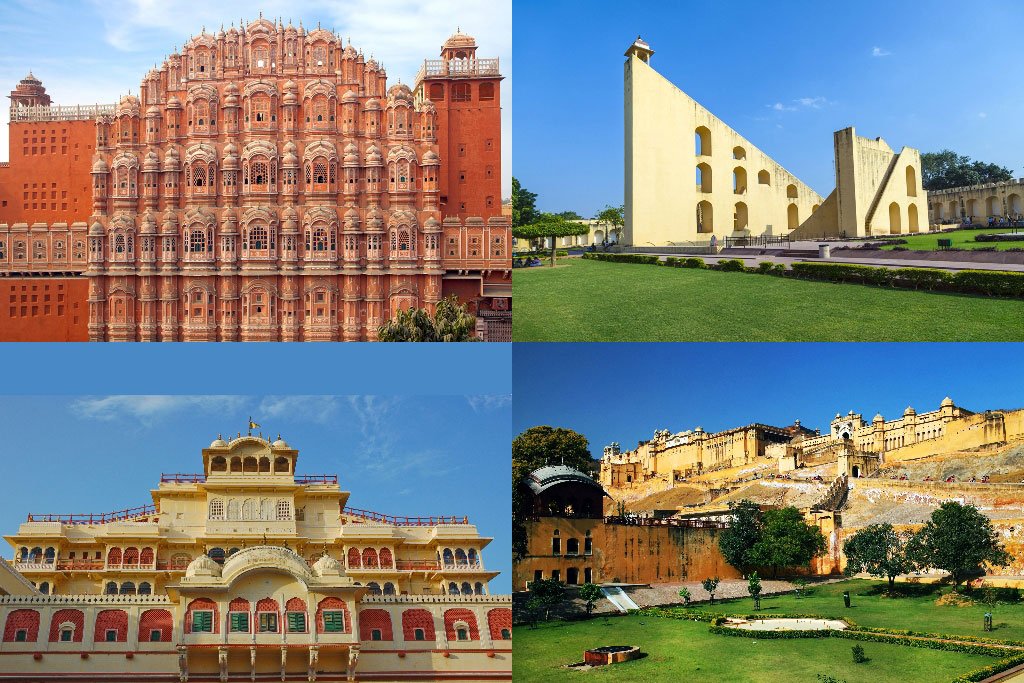
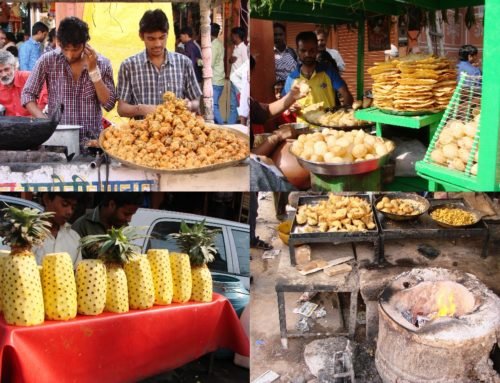
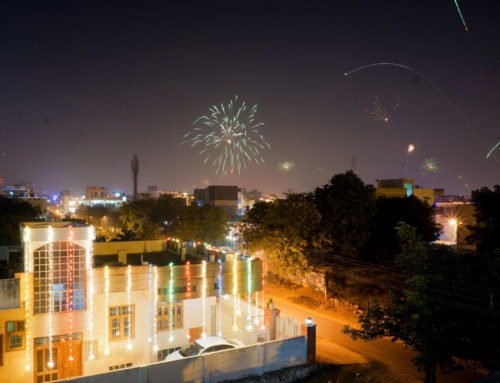
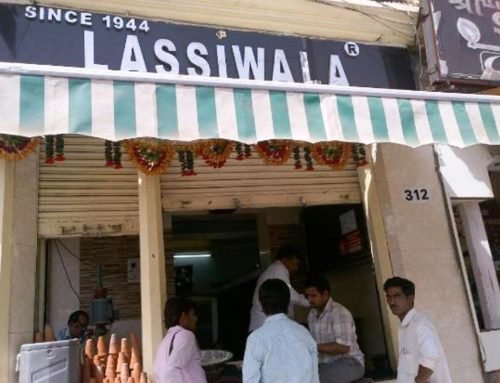
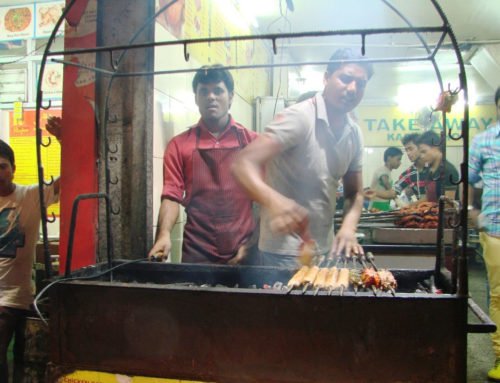

Best tourist city in Rajasthan.